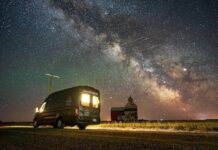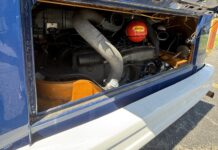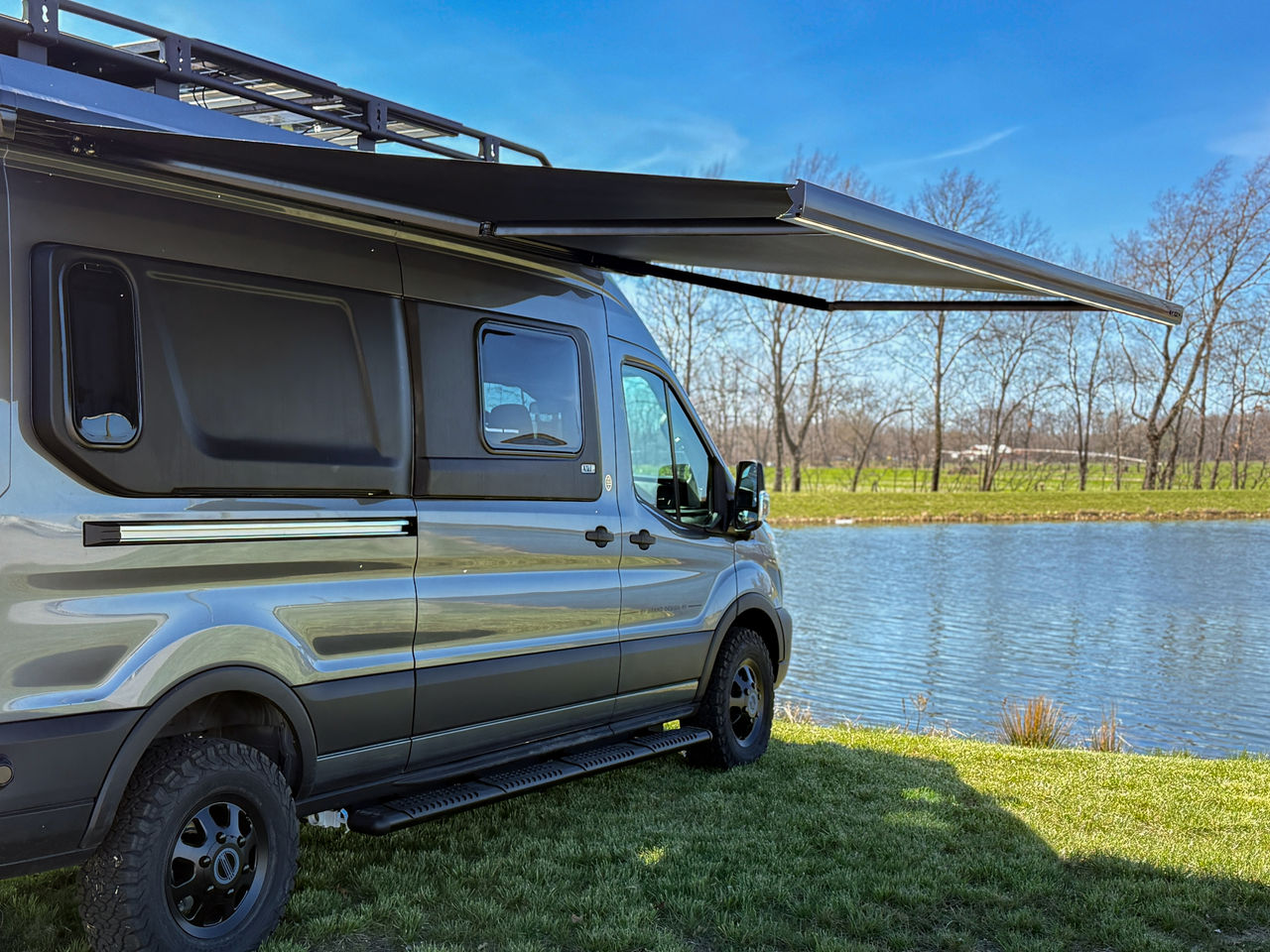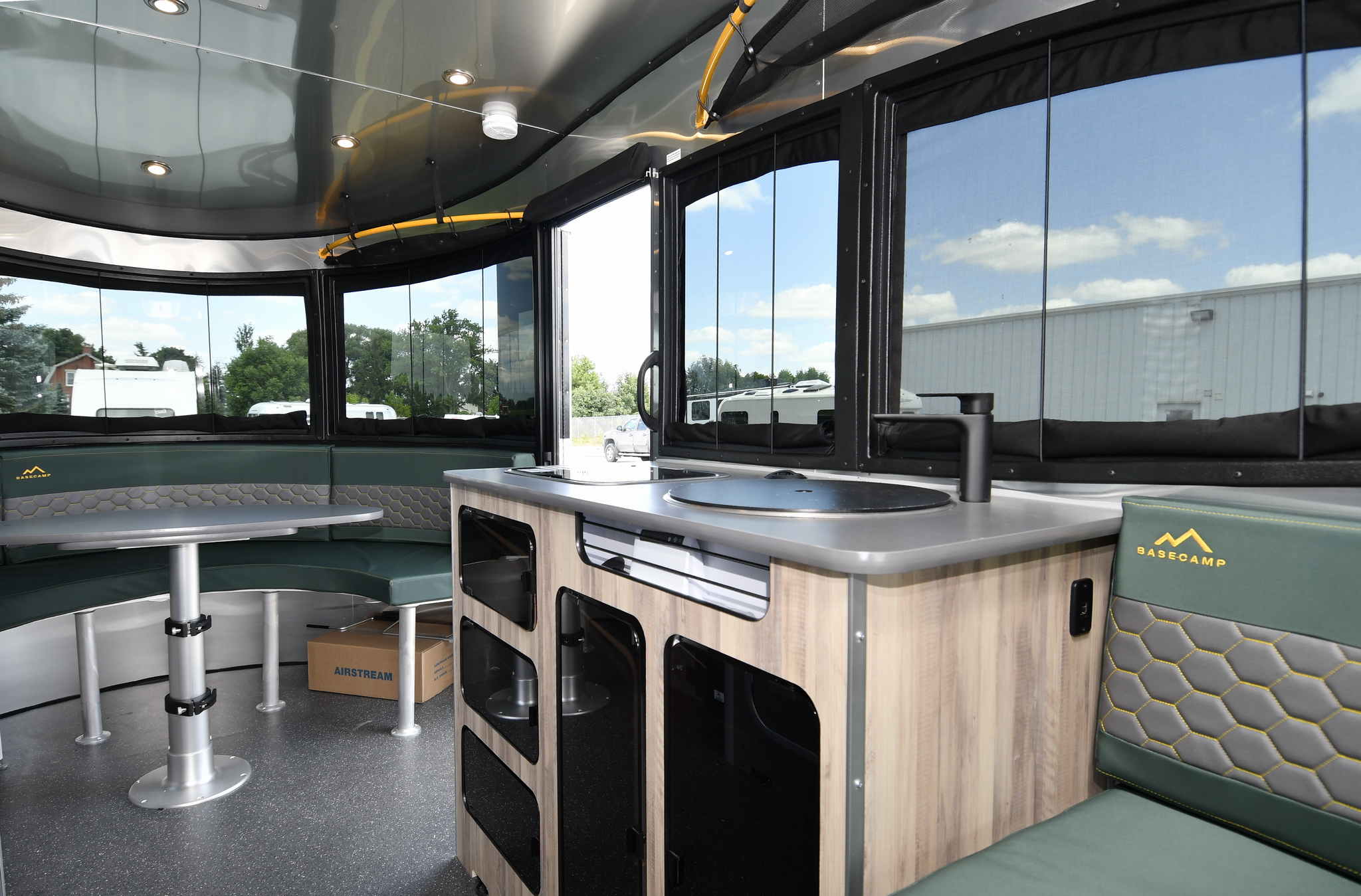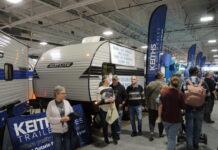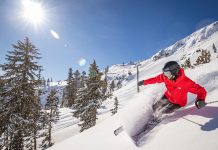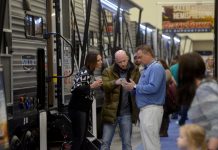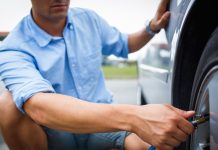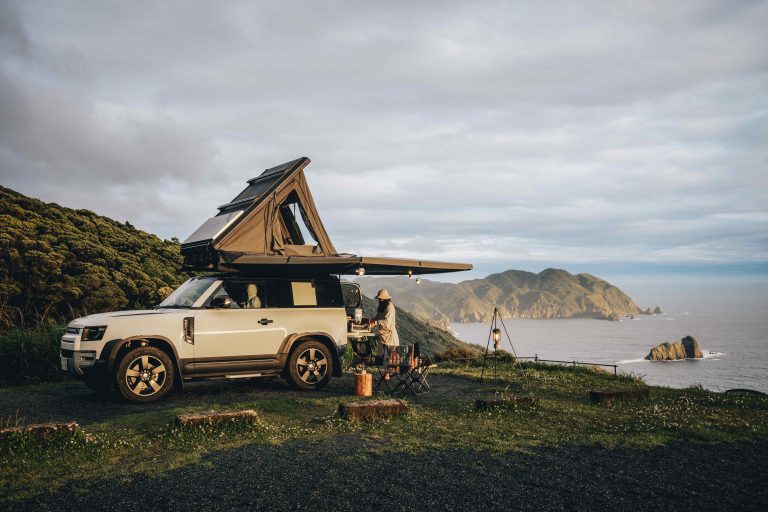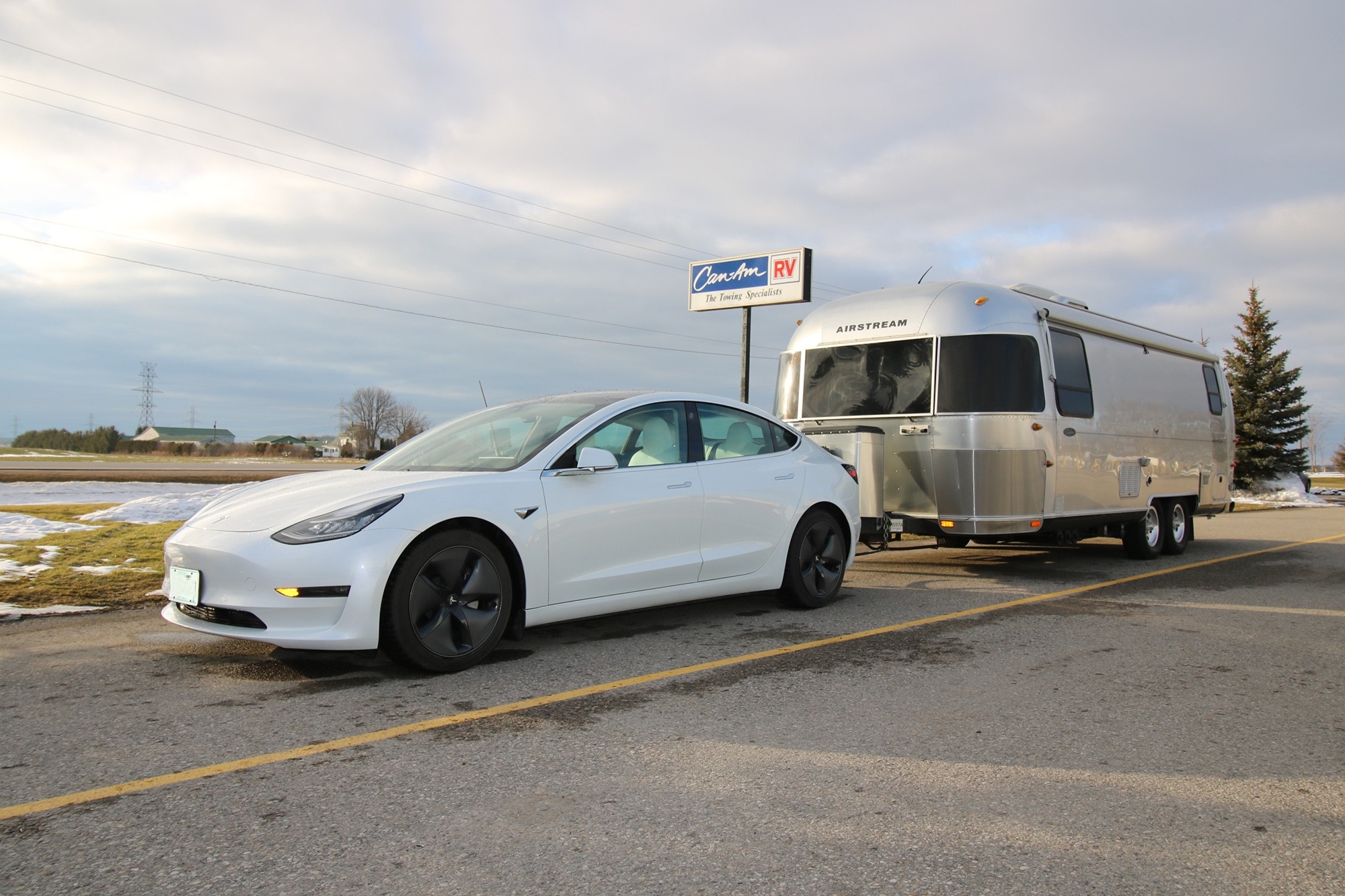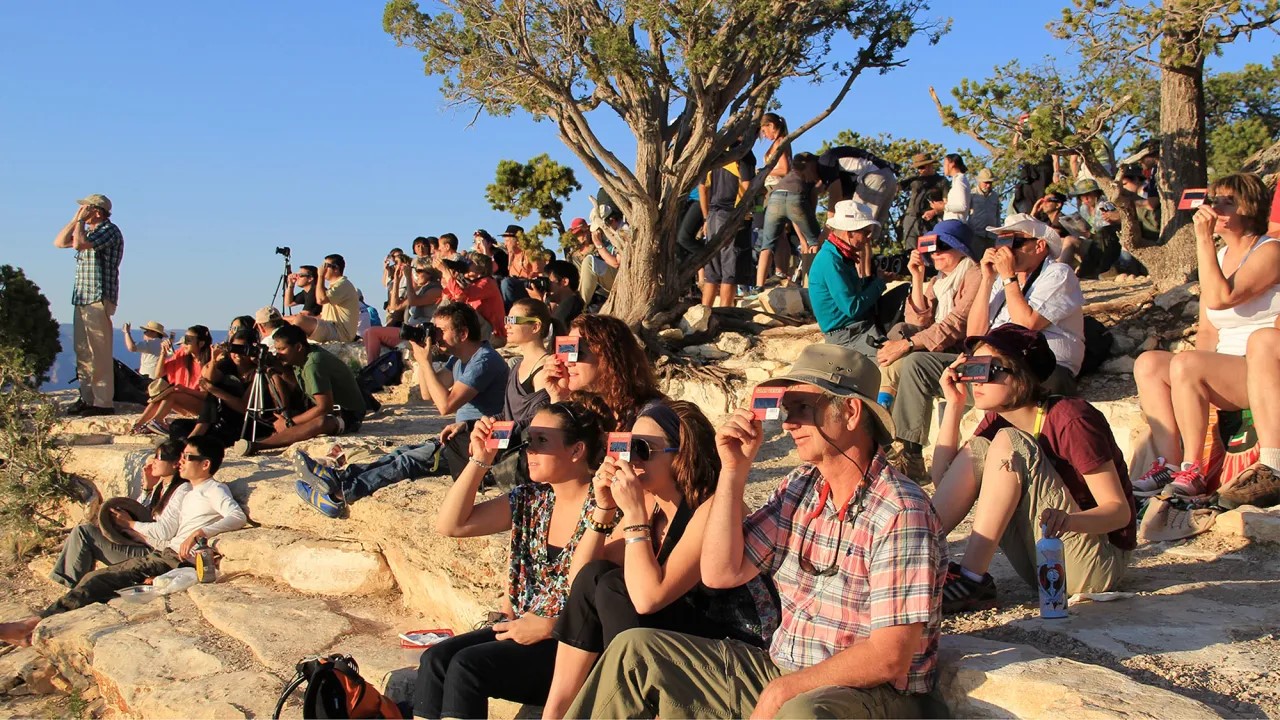Ever since Tesla first arrived on the scene, we have had many inquiries about towing with them. We knew we could put a hitch on one, that they would handle well, and have an abundance of power – the issue was always range.
What has changed in the 2020 models are two factors, Tesla’s Superchargers charge much faster than they used to and there are many more of them. Our theory is that on average you will be able to travel at 90 Kph, (55 MPH) for two hours and then charge for one hour and then travel again. In effect, every three hours you will be able to travel approximately 100 miles. Towing with a Tesla on this schedule will be a different experience, but actually it could be quite relaxing as well.
If you are driving a Tesla without a trailer in tow you have to wait in the car or perhaps at a coffee shop while it charges, but if you are towing a trailer you can make dinner, have a nap, or simply relax. We think this schedule will let you travel more relaxed and for a longer cumulative time each day. In theory, you should still be able to travel the four or five hundred miles per day that most RVers like to achieve.
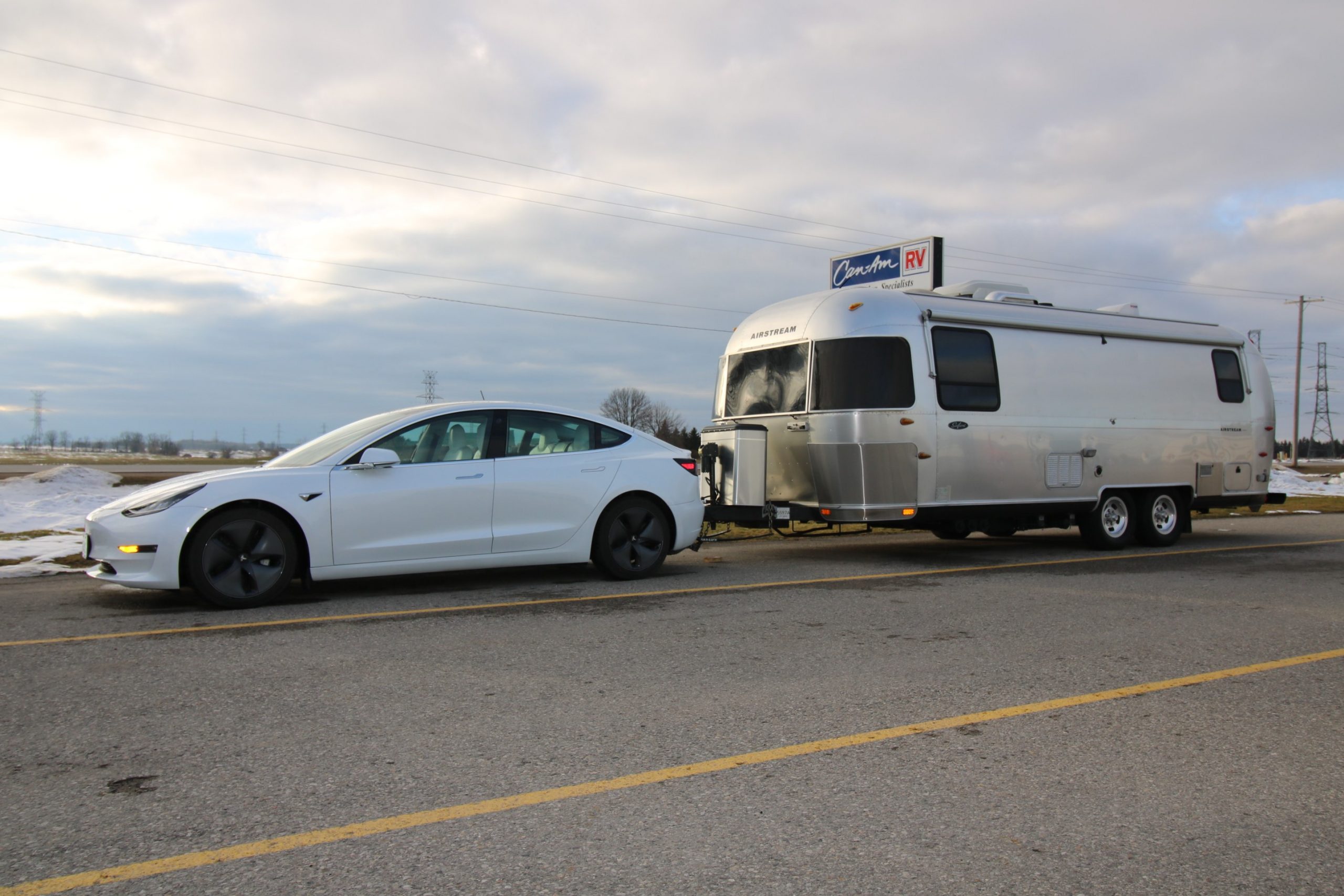
As we continue to tow-test the Tesla, my plan was to hitch up a trailer and take the combination to the Airstream Rally in Denver in June, where I was scheduled to do a towing seminar. I thought this would be a great long distance towing test, and I would see how the Tesla does on the climb through the Eisenhower Tunnel, which is at 11,000’ elevation just west of Denver. Unfortunately, the rally had to be cancelled over concerns about Covid-19, so I will have to wait and see when that test can happen, hopefully this summer.
So far, we have towed a 22’ single axle, a 23’ tandem axle and a 25’ Airstream with this Tesla, compiling a total of about 1500 kilometers. What is it like to tow with a Tesla? The answer is actually quite amazing. First of all, the power is massive, smooth and uneventful. It accelerates like a car without a trailer on it. The ironic thing is this – you have to discipline yourself not to use all of the Tesla’s capability or your range will be shortened. You really must use cruise control because the car accelerates so effortlessly with the trailer in tow, and this easy driving, combined with the lack of engine noise means that you can find yourself at a much higher speed than you perceive you are going. It is pretty easy to be doing 130 Kph at the end of an onramp with no perception of speed.
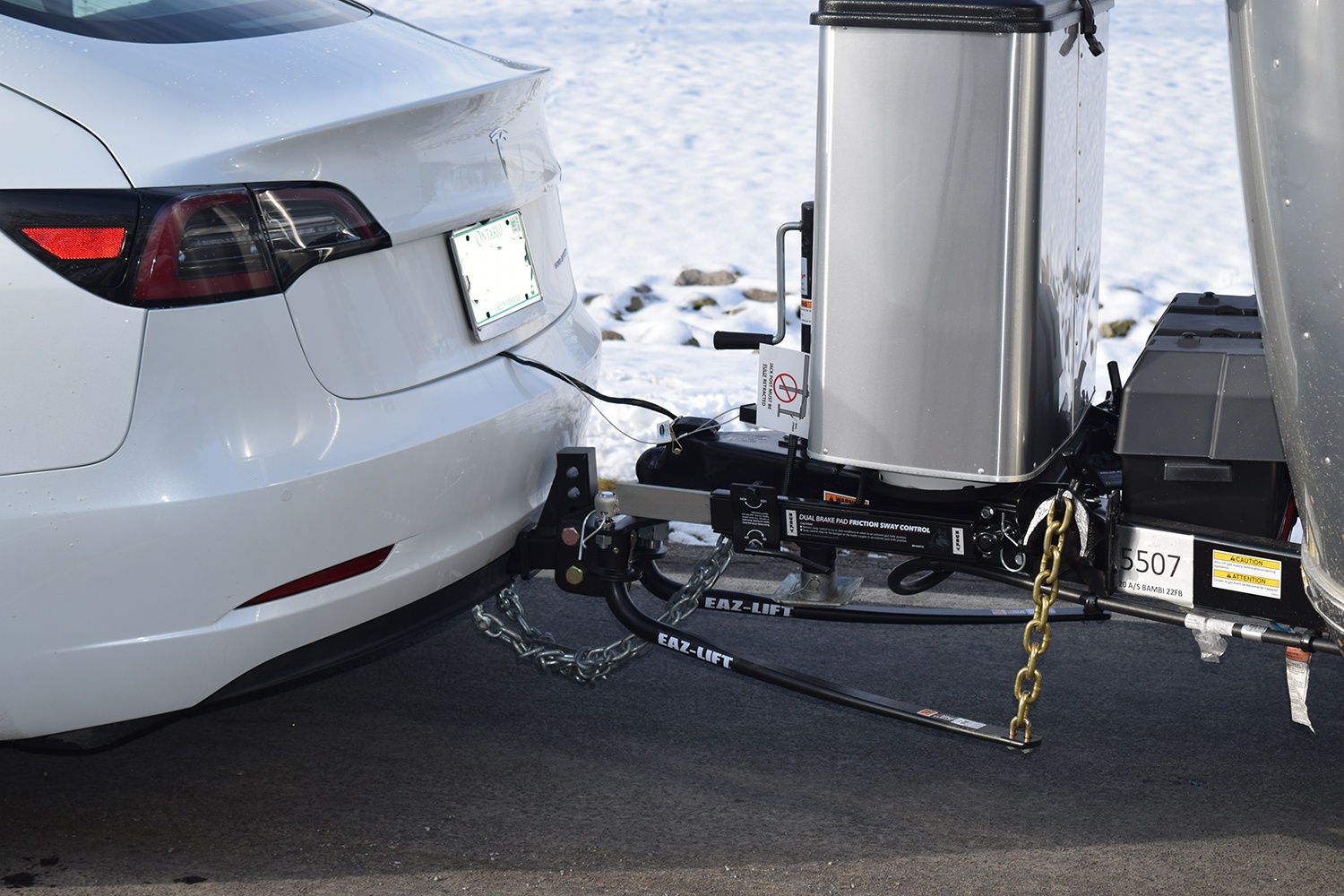
The Tesla Battery pack is located in the floor between the axles for perfect balance and the lowest centre of gravity that we have encountered in pretty much any vehicle. Having the weight between the axles also reduces polar inertia which is the tendency of vehicle to spin because the weight is at the outside extremities, this is why a supercar has a mid-engine. The spring and shock rates are about perfect for towing, slightly firm and well dampened. The steering is direct and responsive, the tire and wheel package is almost perfect as well. The wheelbase is stretched to 113” to make room for the battery pack, combined with a rear overhang of 40”, the overhang to wheelbase ratio is a respectable 35%. This all combines to create handling that is very stable – in fact, it is quite possibly the most stable tow vehicle I have driven. If I could look for a limitation, it would be that the Michelin tires are obviously selected for ultra-low rolling resistance, so they sacrifice a bit of bite for that trade off. All the people who participate in “track days” with these cars have a set of race tires. This is more of an issue when you are driving the Tesla and not towing a trailer.
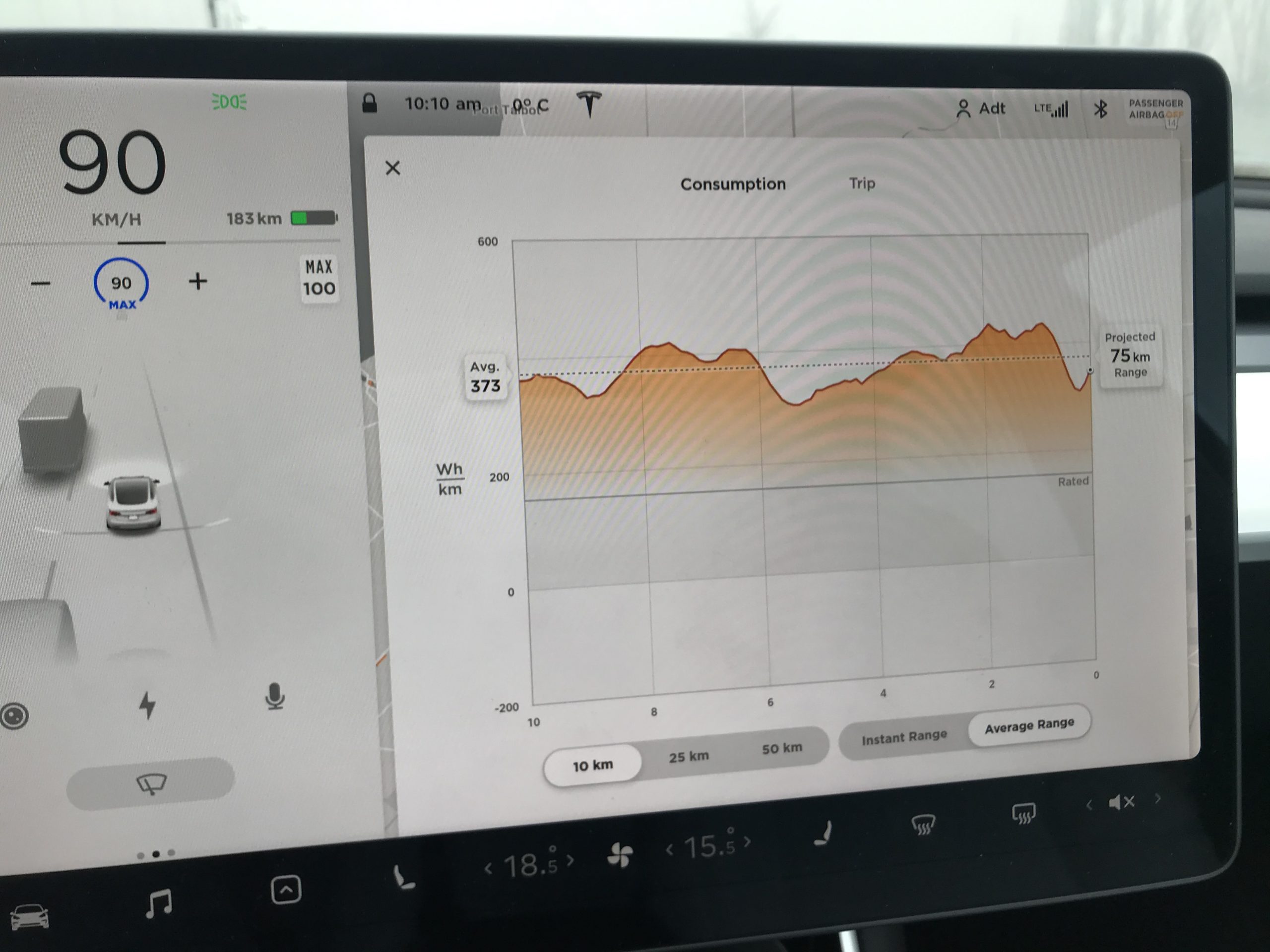
What Can Tesla Tow?
We first towed the 3900-pound single axle 22’ Airstream, next we towed a 5700-pound 25’ Airstream. The weight difference was impossible to perceive, and the acceleration was still effortless, but we noticed a difference in energy use cruising along the highway, and we used an additional 40 watts per kilometer. This would be due to the additional axle and the 25’ trailer being six inches wider and 2” taller than the 22’ model.
The Tesla battery pack holds about the same amount of energy as two gallons of gasoline, so in theory, towing the 22’ Airstream from London to Toronto we were running at the equivalent of more than 50 miles per gallon. This is not quite a fair comparison, because when you burn gasoline a lot of energy is wasted, and a lot of the energy goes towards converting the gasoline to power. Still, we were driving down the road using very little energy, so anything that creates more continuous drag is going to reduce the range. The bottom line is that towing with the Tesla is all about reducing aerodynamic drag and rolling resistance.
So why the Tesla Model 3? Why not wait a couple of years for the Cyber Truck which will have a longer range? Part of our reasoning is that a big part of your travel time is going to be recharging, and the Cyber Truck is going to use more energy both towing and solo, so it would also need more recharging time to travel the same distance. If you travel 100 miles with both of the vehicles, and stop to recharge, the model 3 will be finished charging and 20 miles down the road when the Cyber truck finishes charging, or at least that’s my theory.
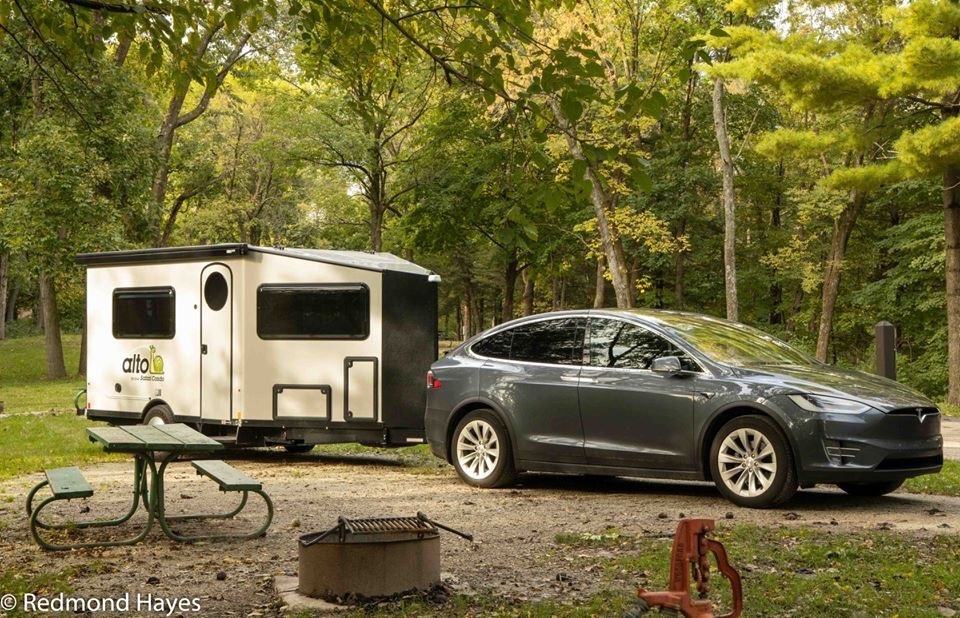
One thing that pleasantly surprised me is how refined the quality of the Tesla is. I was expecting a bit of kit car – you know something that seems not quite finished yet. However, this car has very nice fit and finish, the seats are very comfortable, and so far, everything works. The screen and interface are quite intuitive – today you get into a car and it’s hard to figure out how it all operates. The Tesla is more intuitive – like an i-Phone. I don’t find the self-driving modes useful, but I am sure they will evolve for those that care about that.
I am quite amazed how my passion for cars has changed, being a gear head and loving a great exhaust tone. I never saw myself getting excited about an electric car. Eight months ago, Jaguar announced that 2019 would be the last year for my favourite 5.0 Litre Supercharged XJ, and that it would return as an electric car in a couple of years. At the time I thought “shucks that’s too bad, maybe I should try and find a good ‘17 or ‘18 to update my Jag while I still can”. After experiencing the Tesla, I have no desire to have another gas-powered Jag. My next personal car will be electric. If you have not test driven a Tesla, do yourself a favor and take one for a spin, everyone who has done this is quite blown away. If you would like to test tow with our Tesla, just call to make sure it is at the store and come in and try it out.
Don’t rush out and buy a model 3 for towing just yet… there are still lots of things to know about it: will the motor and batteries stay cool enough while towing in the summer? Will the range really be enough?
Stay tuned and I will let you know how the first long trip goes.







